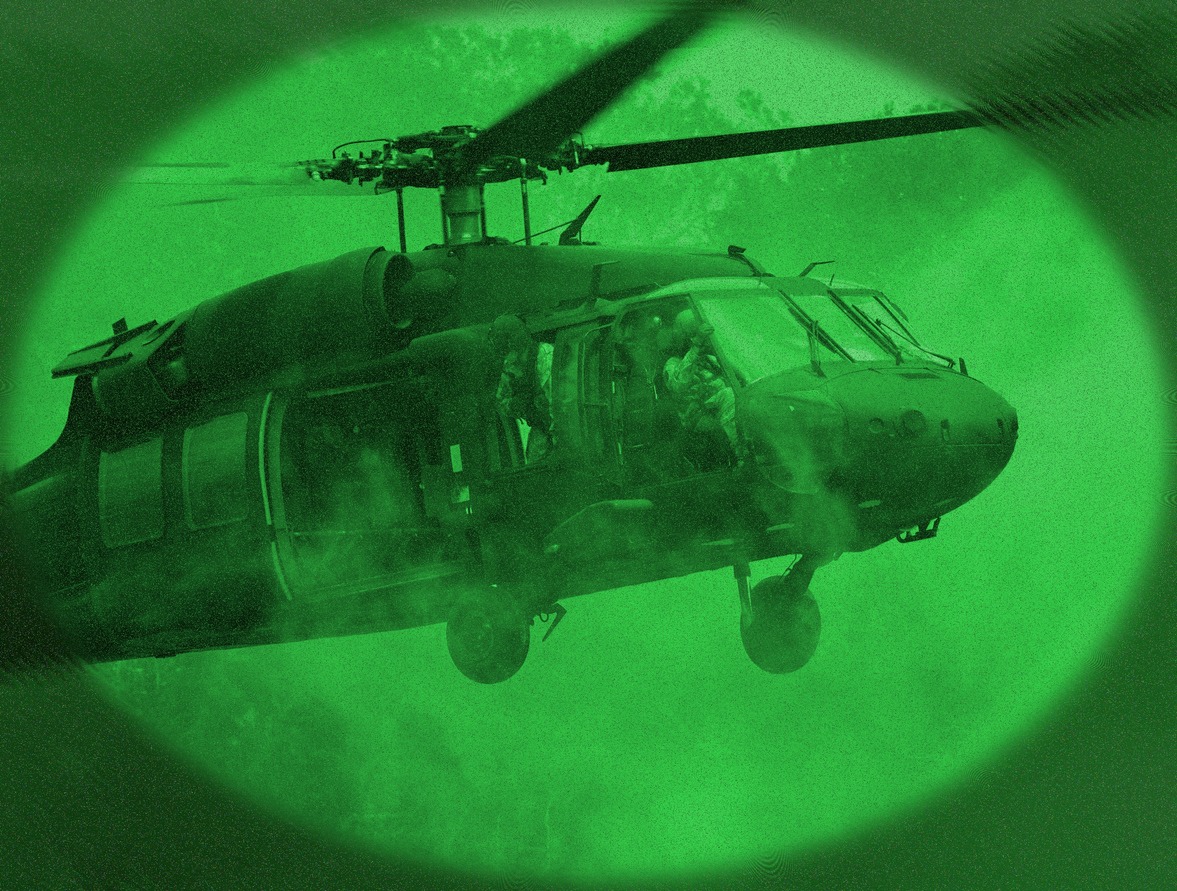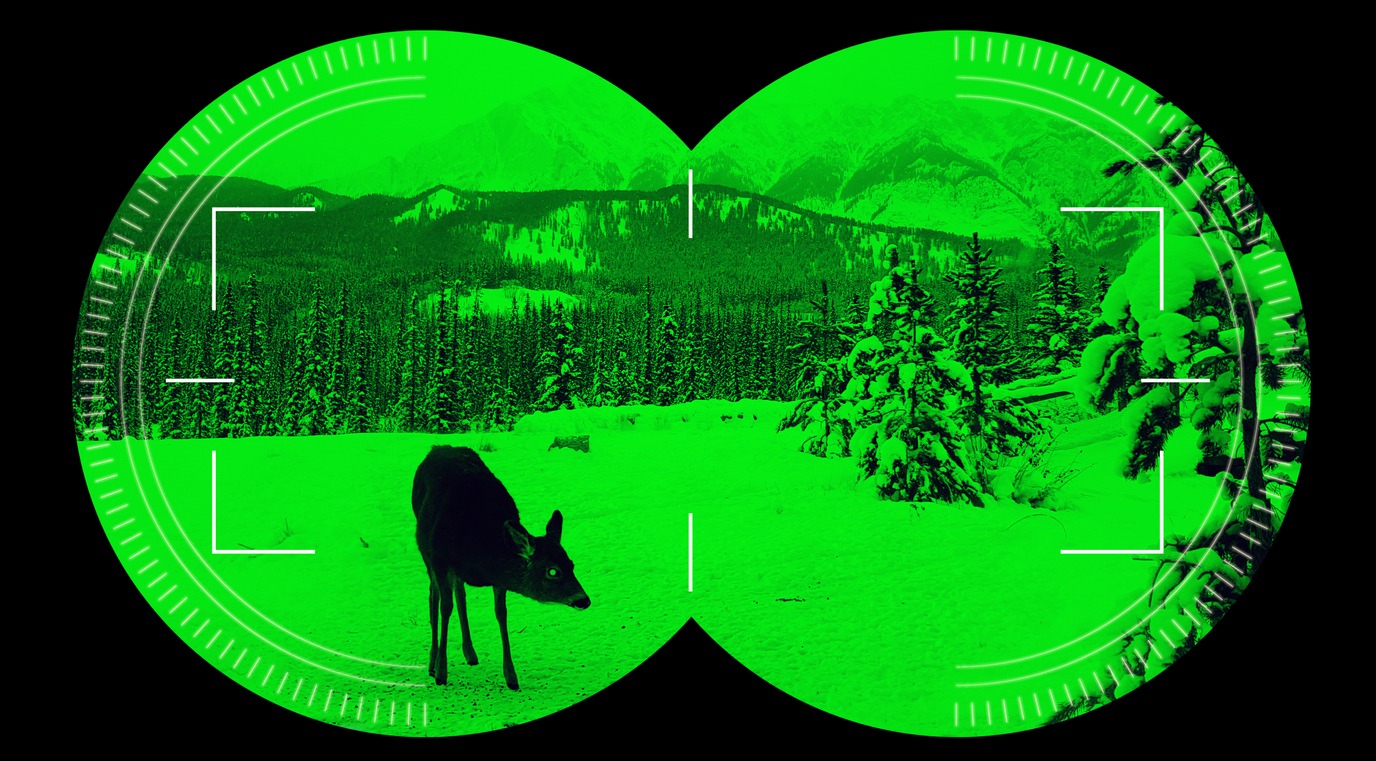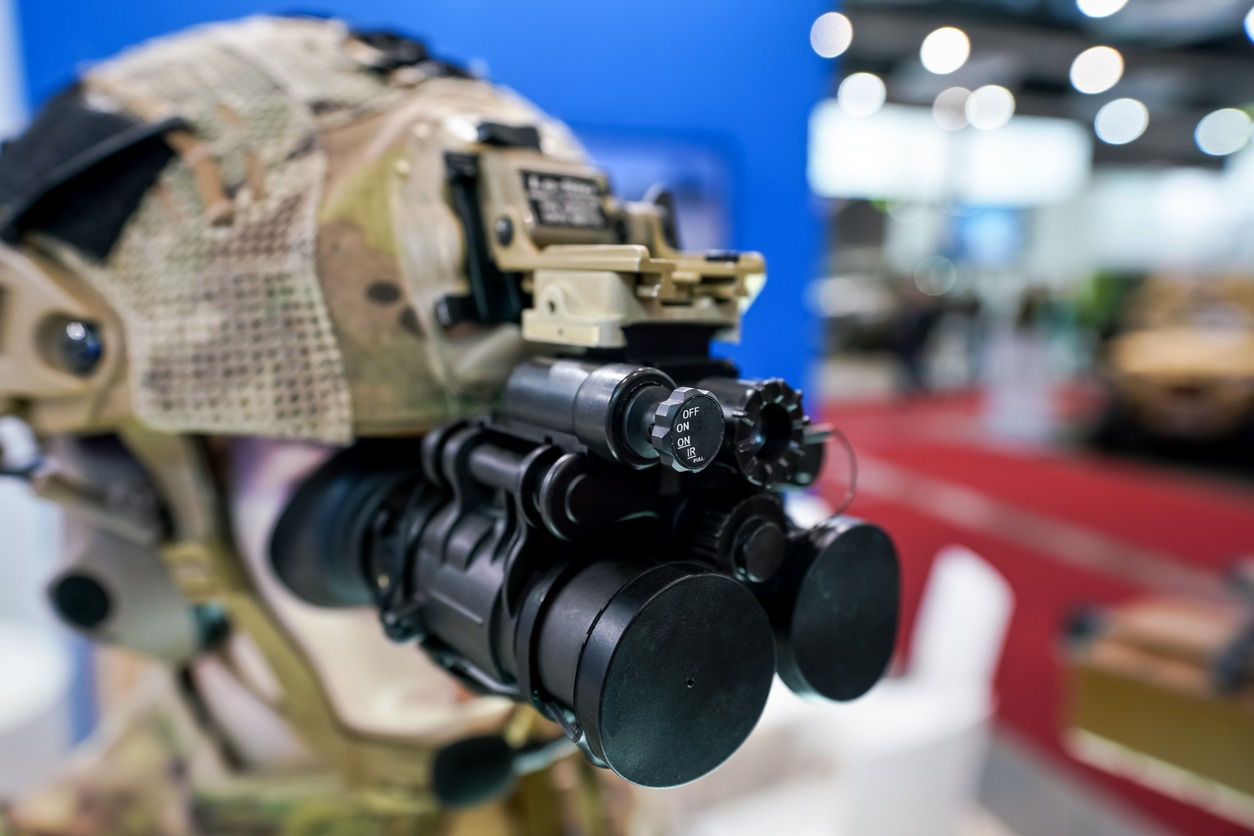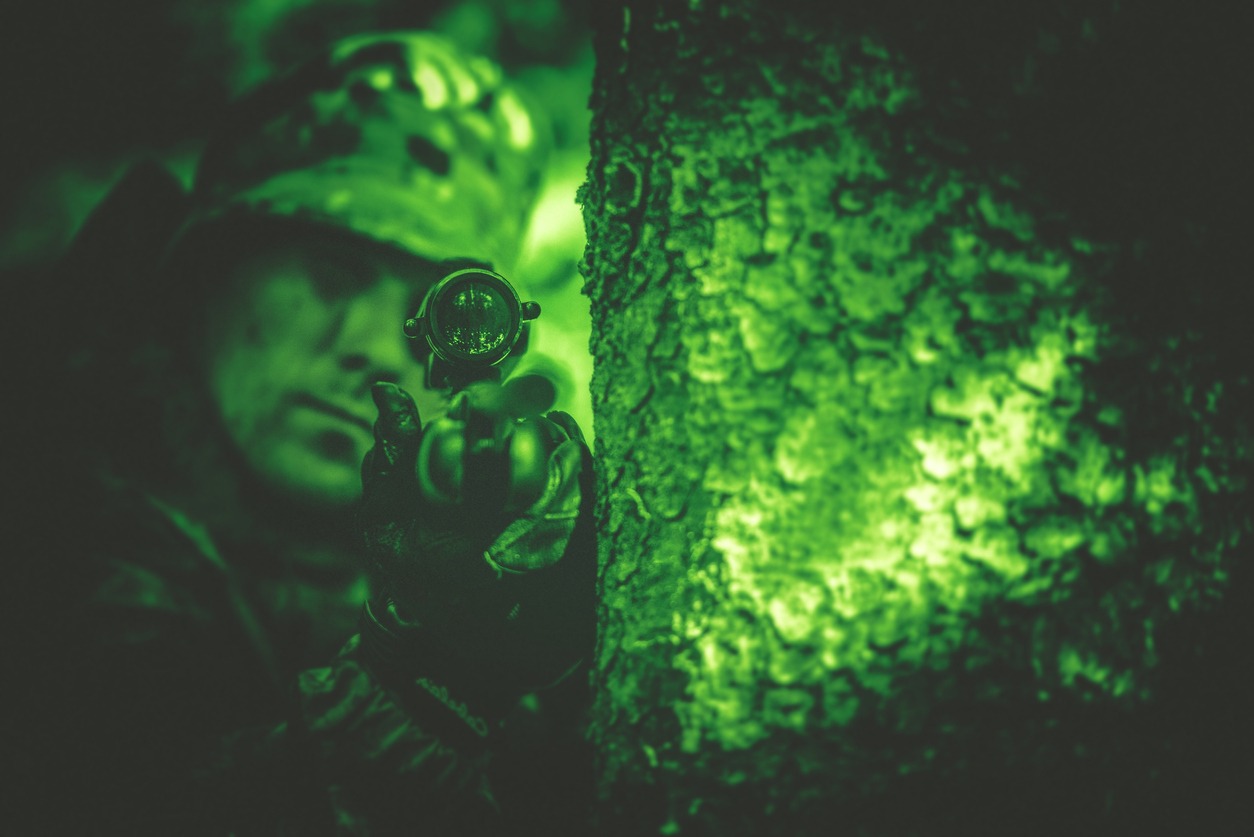Night vision gear serves a wide range of professionals, from military and law enforcement personnel to hunters and security experts. However, the story behind the development of night vision technology is often overlooked. The world of night-vision devices is substantial, and as scientists keep innovating, the market is expanding rapidly.
The history of night vision is a fascinating one, especially considering its indispensable role in modern military operations. It’s progressed from being bulky and heavy to becoming compact and efficient. In this article, learn about the history of night vision and how it evolved into the indispensable tech that it is today.
History of Night Vision Technology
Night vision technology has a rich and fascinating history, with roots dating back to the early 20th century. Here’s an overview of the key milestones in the development of night vision technology:
Development and Early Use
The initial steps in night vision technology occurred in the late 1920s and early 1930s, coinciding with the transition from World War I to World War II. Notably, physicist Kálmán Tihanyi played a pivotal role in creating one of the first night vision systems for the United Kingdom’s soldiers. Tihanyi developed the first infrared-sensitive television camera, marking an early attempt at capturing and displaying images in low-light conditions.
These early devices lacked the infrared technology found in modern night vision gear. Instead, they relied on the available ambient light at the user’s location to enhance visibility and create a brighter environment. This approach had its limitations, particularly in areas with low ambient light and few natural light sources. It’s akin to comparing old black-and-white television to today’s high-definition displays.
Furthermore, these early active devices were quite large, which was not ideal for covert nighttime military operations. Soldiers needed equipment that allowed them to operate stealthily with enhanced night vision.
World War II
Night vision technology gained significant momentum during World War II. Both the Allies and Axis powers explored ways to improve nighttime visibility for military operations.
Before World War II, Germany developed rudimentary infrared devices, and the Allies followed suit. These early “generation zero” technologies amplified existing light about 1,000 times but were unwieldy, requiring massive infrared searchlights mounted on flatbed trucks, which made them easy targets for the enemy.
World War II brought about innovative military uses of technology out of necessity. For instance, US forces utilized sniper scopes to enhance their ability to identify enemy targets. Troops also employed mounting systems to attach night vision equipment to light machine guns, making night vision crucial in locations lacking a natural light source.
Post-War Developments
After World War II, night vision technology continued to evolve. The US military, in particular, invested heavily in its development. Progressing through the 1940s and 50s, the US Army collaborated with the Radio Corporation of America (RCA) to advance the technology.
By the 1950s, the first passive infrared night vision devices were created. These relied on amplifying existing ambient light, such as moonlight and starlight, rather than using active infrared sources. These first-generation passive night vision devices played a critical role in the Vietnam War, where soldiers often operated in low-light jungle conditions. However, they were relatively large and had limited performance.
In 1965, the Department of Defense established a laboratory to advance existing concepts. By 1970, there were significant strides in thermal imaging, and passive Generation II night vision devices made their debut. These devices boasted improved optics, tubes, and resolution, providing a substantial advantage over the adversary.
The 1970s witnessed breakthroughs in thermal imaging technology, which continued to improve over subsequent decades. By the late 1980s, Generation III technology emerged, with a pivotal advantage being a different photocathode that allowed for superior visibility in dark, smoggy, and dusty conditions compared to Generation II. The use of gallium arsenide led to significant enhancements in image resolution and reliability.
The core component of night vision equipment is the image intensifier tube, made up of hair-thin optic glass fibers. Image intensification leverages existing ambient light, such as moonlight, amplifying it through electrical and chemical processes, resulting in the familiar bright green image seen in movies and video games. In recent times, thermal imaging, which captures infrared rays emitted by humans and objects, is gaining prominence. It allows for effective operation in total darkness, even when there is no starlight to amplify.
Wearable night vision devices, including enhanced night-vision goggles, have evolved in terms of materials and battery packs, making them suitable for portable applications. Night vision goggles have proven beneficial for various personnel, including pilots and infantry, providing increased depth of field.
When transitioning to a night vision environment, binoculars have proven more advantageous than monoculars as they provide a complete night-vision image instead of just one eye’s view. The ease of interchange between optics depends on the type of firearm in use.
Night vision systems played a pivotal role in Operation Desert Storm during the early 1990s, with one general testifying that the Army’s night vision capability was a significant advantage.
Image intensification technology has made significant advancements compared to its use in the Second World War and Vietnam. As image intensification continued to improve, the safety and effectiveness of those relying on night vision technology for their jobs or recreational activities also increased.
Modern Night Vision Technology
Today’s night-vision tools can amplify light by fifty thousand times or more compared to the technology available during the Second World War. With the rapid progress in thermal imaging and infrared technology, optics companies continually enhance their equipment to meet the high demands of various industries. Moreover, night vision devices are becoming more accessible and affordable for non-military applications.
Innovations are occurring at such a pace that traditional thermal imaging and unique forms of night vision can be replaced by camera-based systems. These systems enable users to engage in activities like rifle aiming around corners, recording footage, reconnaissance, and target tracking. They can even identify friends from foes and see through smoke screens. A groundbreaking development is the integration of firearm-mounted cameras with reticles.
Modern optical designers are exploring minimalist designs and materials that offer high performance while reducing weight. One of the most significant benefits of night vision technology is the heightened situational awareness it provides. For example, it can outline a soldier against the background, offering a substantial tactical advantage.
Regardless of the many changes in the night-vision field, the core principle remains constant: these devices are not just technologies but essential life-saving tools.
Night Vision Generations
When it comes to night vision devices, they are classified in different generations. First and foremost, it’s crucial to note that when people mention night vision generations, they are referring to the Image Intensifier Tube (IIT) inside the night vision device. The IIT is a critical component that amplifies existing ambient light by accelerating the electrons of incoming light, simplifying the concept of how night vision works.
The concept of “generations” was initially developed for military use, aiming to standardize equipment specifications across various national militaries. Over time, these generations have become a standard reference point for assessing the quality of night vision devices, applicable to both military and civilian users. Night vision has also gained widespread recognition through its portrayal in TV shows and movies, finding applications in security, military operations, hunting, farming, and everyday use.
Generation 0
The original night vision system was created by the United States Army for use in World War II and the Korean War. These night vision devices use active infrared and come with a projection unit (IR illuminator) attached to it. The unit projects a beam of infrared light that is invisible to the naked eye. However, the acceleration of electrons distorts the image and decreases the lifespan of the tube. Also, it was quickly duplicated by hostile nations, allowing their soldiers to use their own night vision systems to see the infrared beam, making the user a target.
Generation 1
Generation 1 night vision devices are the earliest technology in the night vision spectrum that moved away from active infrared. These have been in use since as early as the 1950s. Unlike Gen 2 and Gen 3, Gen 1 tubes lack a global standard, resulting in variations in tube quality from one device to another.
These technologies were once dubbed “Starlight” by the US Army as it uses ambient light provided by the moon and stars. Gen 1 devices are most suitable for short-range observation, particularly under conditions with moderate moonlight. So, they don’t work very well on moonless or cloudy nights.
When using Gen 1 devices, it’s common to encounter imperfections or blemishes in the form of black dots within the tube. In lower light conditions, an Infrared Illuminator might be necessary to achieve a clear image. These illuminators can either be integrated into the device or external torches, depending on the specific night vision equipment.
Generation 2
Generation 2 night vision devices represent a significant improvement in both quality and lifespan compared to Gen 1. While an average Gen 1 tube provides around 1,000 hours of use during its lifetime, a Gen 2 Image Intensifier Tube (IIT) offers users a significantly longer lifespan, typically rated between 2,500 and 5,000 hours.
The resolution and performance also improved and are considerably more reliable, as they can be seen in low-light conditions like moonless nights.
Generation 3
Generation 3 (Gen 3) night vision devices are considered the pinnacle of civilian-grade night vision technology. Their high price point makes Gen 3 typically reserved for military, law enforcement, and individuals seeking the very best equipment available. Gen 3 devices offer an outstanding life expectancy, surpassing Gen 1 and Gen 2 with an impressive 7,500 to 10,000 hours of tube life.
A high-quality Gen 3 device should provide the user with an exceptionally clear, crisp, and bright image. Gen 3 units excel in low-light conditions, often without the need for infrared illumination. Many Gen 3 models offer users the choice between an auto-gated or manual gain tube, allowing for enhanced adaptability to various scenarios.
Positive Impacts of Night Vision Technology
Night vision technology has made significant strides since its inception and has had a profound impact on various fields. It has been widely adopted in the military, law enforcement, wildlife observation, and consumer electronics. With continuous advancements, night vision technology has become more reliable and efficient, serving as an essential tool in many applications. Let’s explore some of the major positive impacts of night vision technology.
Improved safety and security in low-light conditions
Night vision technology enhances visibility in the dark, making it particularly valuable for nighttime driving, shooting, or navigating dark buildings. This technology plays a vital role in maintaining the safety of the user. Innovative lenses have also been developed to improve nighttime vision and reduce the effects of night blindness.
Enhanced military and law enforcement operations
Night vision technology greatly enhances the efficiency and effectiveness of military and law enforcement personnel operating in low-light conditions. It enables them to see in the dark, which is especially valuable for surveillance, search and rescue missions, and tactical maneuvers.
Moreover, night vision technology has played a crucial role in reducing the risk of friendly fire incidents during military operations. By allowing officers to detect potential threats before they become dangerous, this technology has markedly improved the safety of the police and military.
Wildlife observation and conservation
Night vision technology has revolutionized wildlife observation and conservation efforts. Researchers and conservationists can now study nocturnal animals without disturbing them, as night vision devices allow for covert monitoring in their natural habitats. This technology has proven invaluable in gathering data on elusive and endangered species. Furthermore, it has opened up new avenues for studying animal behavior and improving wildlife protection.
Consumer electronics and recreation
Night vision technology has made its way into the consumer market, offering a range of applications for outdoor enthusiasts, hunters, and hobbyists. Night vision binoculars, monoculars, and scopes are readily available, allowing users to explore the nighttime world and enjoy activities such as camping, hiking, and wildlife observation after dark. These consumer-grade devices have expanded the horizons of nighttime recreation.
Search and rescue operations
Night vision technology is pivotal in search and rescue operations, enabling responders to locate and assist individuals in distress during the night or in low-light conditions. This technology is instrumental in saving lives and ensuring successful rescue missions, particularly in challenging environments.
Surveillance and security
Night vision technology is widely employed in surveillance and security systems. It provides enhanced monitoring capabilities in various settings, from residential properties to industrial facilities. The ability to see clearly in the dark is indispensable for deterring and responding to security threats.
Improved monitoring of infrastructure and borders
The application of night vision technology in infrastructure and border monitoring leads to increased safety, security, and operational efficiency. By enhancing the monitoring of critical infrastructure, such as ports, airports, and roads, potential threats and issues can be detected in real-time. This enables rapid responses to prevent damage and accidents.
Efficient border monitoring, facilitated by night vision technology, ensures the smooth flow of goods and people across borders while maintaining essential security measures. Improved visibility in low-light conditions greatly contributes to the effectiveness of these efforts, safeguarding vital national and international interests.
Enhanced nighttime navigation and transportation
Night vision devices play a pivotal role in nighttime navigation, enabling individuals to recognize objects and people that would otherwise remain invisible to the naked eye. This is particularly valuable for military operations, search and rescue missions, and surveillance activities conducted under the cover of darkness.
Incorporating emerging technologies like geofencing enhances nighttime transportation safety. Vehicles equipped with night vision technology can better adjust speed and responses when driving in low-light conditions, contributing to reduced risks associated with compromised night vision.
Negative Impacts of Night Vision Technology
While night vision technology has brought significant benefits to various fields, it is not without its negative impacts. It’s essential to recognize and address these downsides to ensure this technology’s responsible and ethical use. Let’s explore some of the major negative impacts associated with night vision technology.
Privacy concerns and invasion of privacy
Night vision technology raises privacy concerns and the potential for invasion of personal privacy. The ability to see in the dark can extend to viewing private spaces, such as homes or businesses, potentially leading to a violation of privacy and concerns about unwarranted surveillance. As technology advances, it becomes increasingly important to consider the negative impacts on privacy and take steps to protect personal information.
Research has demonstrated the importance of privacy for psychological well-being, and a lack of control over personal information can cause stress and anxiety. Striking a balance between the advantages of night vision technology and the need for privacy protection is crucial.
Misuse and weaponization of night vision technology
While primarily developed for legitimate purposes, night vision technology has been subject to misuse and weaponization. Military forces use it for covert operations and nighttime attacks, while terrorist groups have also employed this technology to conduct attacks under the cover of darkness.
Illegal hunting and poaching have seen the unauthorized use of night vision technology, posing a significant threat to wildlife and biodiversity. The misuse of this technology has far-reaching consequences for both humans and nature.
Additionally, the weaponization of night vision technology can be a national security concern if it falls into the wrong hands, potentially leading to unauthorized and harmful activities.
It is imperative to regulate the use of night vision technology and implement safeguards to prevent misuse, thereby minimizing its negative impacts.
The costs of procuring and maintaining night vision equipment
Night vision technology comes at a high cost, with prices ranging from a few hundred to thousands of dollars per device. Furthermore, the complexity of the technology and the need for specialized training to operate and maintain it contributes to significant maintenance expenses.
The potential for misidentification and false positives
Night vision technology introduces the potential for misidentification and false positives, which is a concern in various fields, including threat intelligence, security operations, and incident response. Eyewitness misidentification is a significant issue within the criminal justice system, often leading to wrongful convictions.
False positives can result in negative experiences for customers and administrative challenges. It is important to recognize that tests involving night vision technology, like any technology, are imperfect and may produce false positives (incorrect identifications) and false negatives (missed identifications).
The challenges of limiting the spread of night vision technology
Night vision technology can be exploited for illegal activities such as poaching, smuggling, and burglary. It is also a concern that terrorists and other criminals can use this technology to carry out attacks under the cover of darkness. The availability of night vision technology in the market, including online purchase options, poses challenges for limiting its spread.
Additionally, its legitimate use by the military makes it challenging to regulate its availability. Advancements in computer vision and deep learning have also contributed to overcoming low-level vision problems associated with night vision technology.
To prevent misuse and address these challenges, stricter regulations on the sale and use of night vision technology are needed. It is essential to strike a balance between legitimate use and security concerns while minimizing negative impacts.
Conclusion
Night vision technology has undeniably revolutionized multiple sectors, from military operations to law enforcement, transportation, and search and rescue missions. Its positive impacts, such as enhanced safety, improved navigation, and heightened security, are clear.
However, it is essential to acknowledge and address the technology’s negative consequences, including privacy concerns, misuse, and the potential for misidentification. Striking a balance between harnessing its benefits and safeguarding against its misuse is crucial. With responsible use and continued innovation, night vision technology can continue to illuminate paths to safer and more secure futures.



